

Last updated on

Despite initial concerns, Chat GPT has not replaced traditional search engines. In fact, Q2 record earnings indicate that Google Search is performing better than ever. That’s why OpenAI’s new search engine, Search GPT, makes sense only after a closer examination.
Why would OpenAI launch a search engine when its main product is seen as one of Google’s biggest competitors?
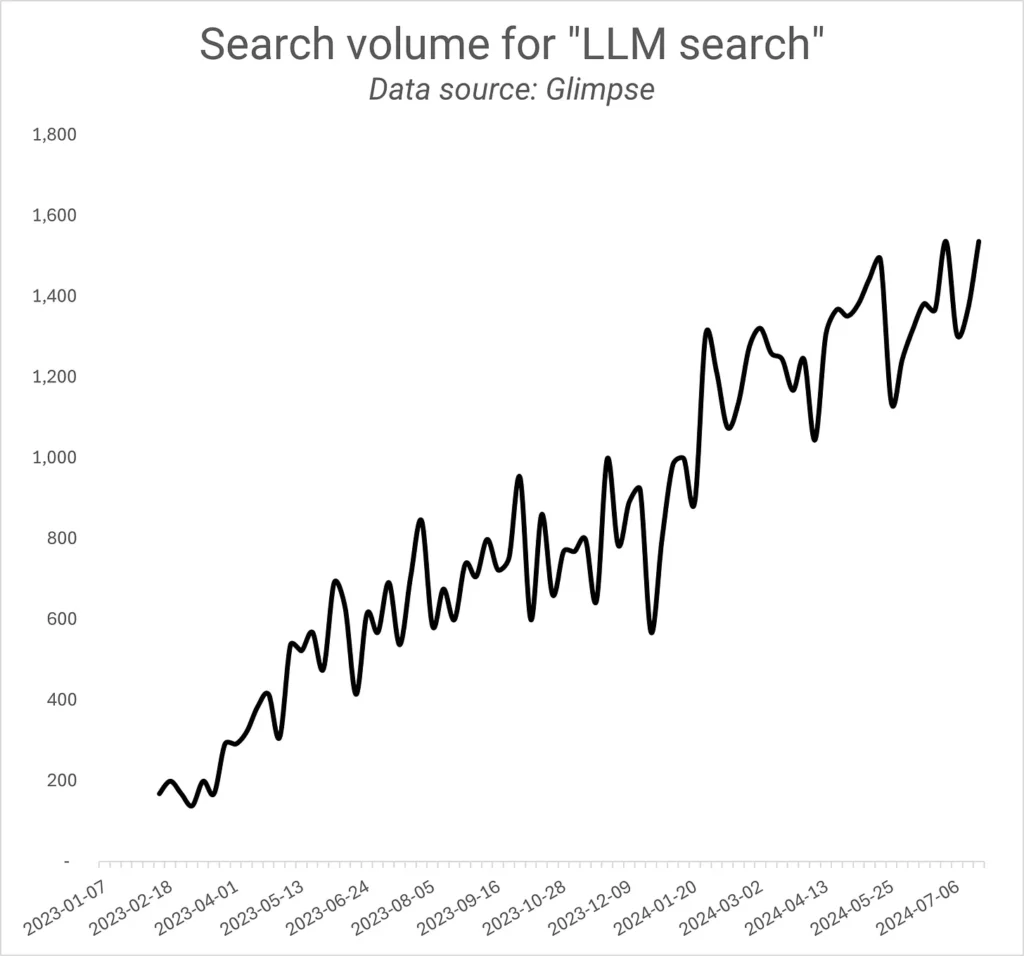
While searches for “LLM Search” are increasing, it’s not consumer demand driving OpenAI in this direction. There are six key reasons, listed in order of importance:
1. Chat GPT, despite its similar capabilities, is not perceived as a search engine. Therefore, OpenAI is positioning Search GPT as a direct alternative to Google to capture more market share in the search industry.
Rumors about the launch of a search engine just before Google I/O in 2024, and the impact of the actual announcement on Alphabet’s stock, indicate OpenAI’s ambition to compete directly.
According to The Information, OpenAI incurs annual expenses of $5 billion. Capturing just 3% of Google’s $175 billion search business could allow OpenAI to cover these costs.
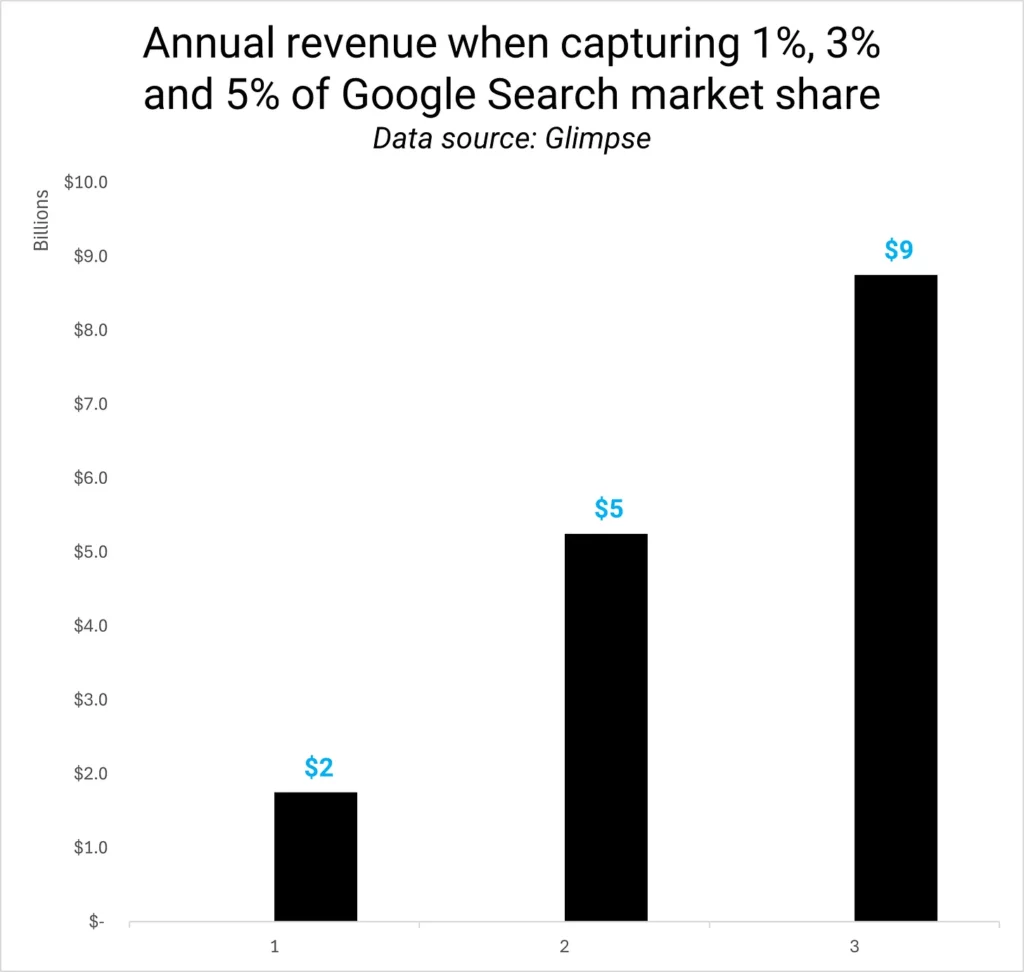
Searches for ChatGPT on Google are increasing significantly, nearing the volume of searches for “Google” itself. They’ve already far surpassed searches for other search engines.
It’s worth noting that people tend to search for “Google” less frequently on Google, possibly just to navigate to the homepage from the browser bar. Additionally, the traffic numbers between Google (465 billion, according to Similarweb) and Chat GPT (660 million) are still vastly different.
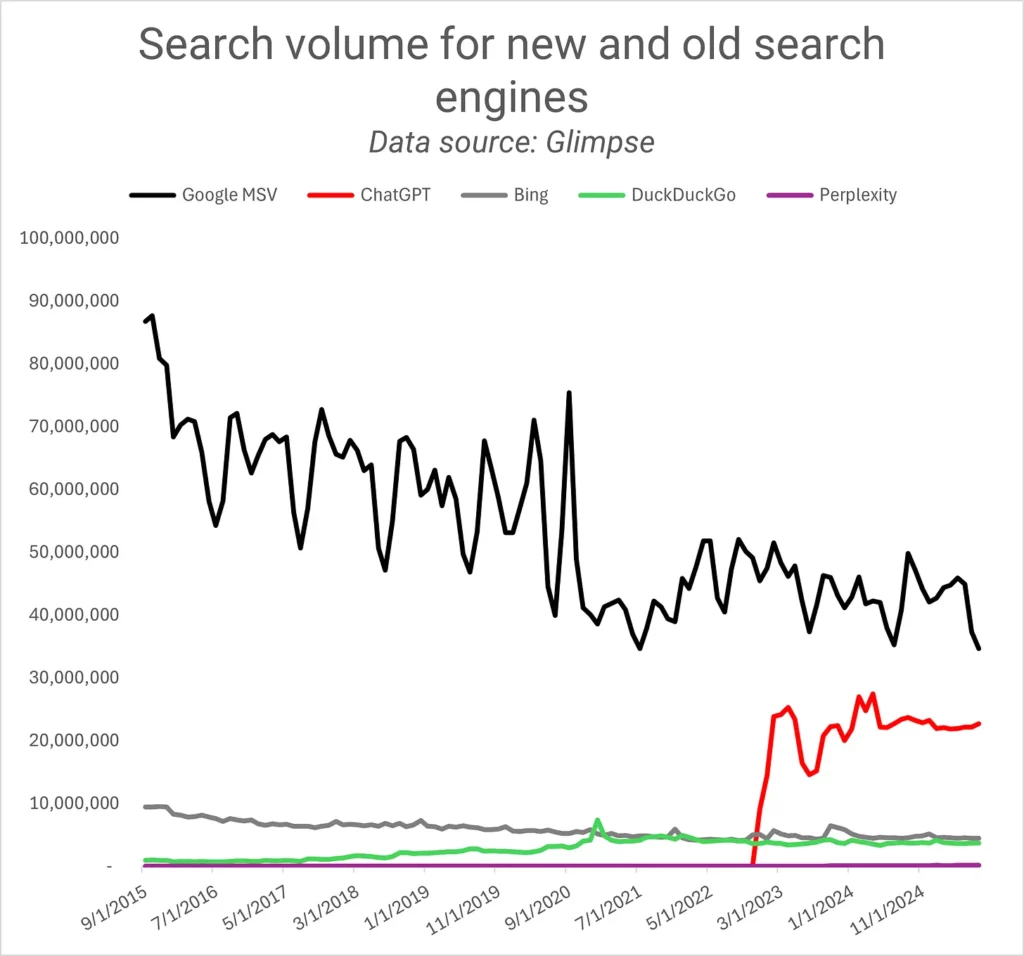
2. OpenAI holds a strategic advantage over Google: Search GPT can offer a distinct, potentially less cluttered user experience since it isn’t dependent on ad revenue. In contrast, Google has to consider advertisements in every decision related to search.
OpenAI already crawls the web for training data, giving it a foundational element for building a search engine. Consumers are already familiar with the concept of a search engine, making it easier for them to adopt a new one.
While OpenAI is likely to attract many curious sign-ups for Search GPT, the bigger challenge will be retaining these users.
It’s also important to note that the market has not yet settled on the final form of large language models (LLMs). While chatbots are popular due to their conversational nature, voice devices may eventually become better suited for LLMs.
3. Search can provide better user signals than prompting because it caters to a more specific use case.
The beauty of prompting is that it offers endless possibilities. You can do whatever you want. However, this flexibility can also be a drawback because many people are unsure of what they want to do or where to begin.
As a result, success and failure are harder to measure at scale for chatbots than for search engines.
A search engine, while versatile, has clearer use cases, which could drive greater adoption and provide better signals for LLMs to learn from. These learnings could then improve chatbot responses, a key component of Search GPT.
4. OpenAI aims to support publishers by providing a steady stream of content, which is crucial for training models and delivering timely responses.
Search is the largest source of traffic for publishers, but many are increasingly frustrated with Google due to algorithm updates, site reputation penalties, and AI-generated content summaries.
This is an opportune moment for OpenAI to offer an alternative revenue source and gain publishers’ support, especially since OpenAI has faced criticism from publishers and a lawsuit from The New York Times.
The launch of SearchGPT comes after a series of publisher licensing deals, including:
However, even the best deals won’t help if publishers can’t sustain the creation of fresh content. If Search GPT can become a new source of traffic and revenue for publishers, it could help keep the critical content ecosystem alive and build positive relationships with publishers.
5. Perplexity is a minor competitor to OpenAI, but even a small competitor can capture some mind share. It’s never wise to underestimate the competition. A search engine from OpenAI could conveniently limit Perplexity’s growth. Why use Perplexity when Search GPT, with a similar appearance, offers the same functionality?
6. OpenAI might be betting on the possibility that regulators could break up Google’s exclusive search engine deal with Apple, potentially allowing OpenAI to become an option among search engines on Apple devices.
While this scenario is unlikely and not the primary reason for developing a search engine, it could still be a minor contributing factor.
Search GPT is clearly a sibling of Chat GPT. Besides features like weather charts and standard functions like auto-suggest, the user experience is similar to that of Chat GPT.
The differences may be subtle at first glance, but they are significant in terms of potential revenue generation, competition with Google, and enhancing OpenAI’s data mining capabilities.
One notable distinction is that Search GPT has more prominent links to web results, signaling a clear nod to publishers.
The Search GPT landing page emphasizes the importance of publishers for the open web, mentioning the word “publisher” 14 times and highlighting OpenAI’s commitment to collaborating with them.
OpenAI uses a separate user agent to crawl websites for its search engine, distinct from the one used for LLM training, and maintains a strict separation between the two.
Crucially, Search GPT is focused solely on search and is independent of training OpenAI’s generative AI foundation models. Websites can appear in search results even if they opt out of generative AI training.
It’s no coincidence that OpenAI is seeking to strengthen its presence on the web. A recent study found that 25% of words (tokens) in Common Crawl come from domains that have now blocked AI crawlers, with OpenAI frequently being listed in their robots.txt files or terms of service.
Every SEO professional is asking themselves two key questions: should they care about Search GPT, and how might it function?
Given the widespread adoption of Chat GPT, Search GPT has the potential to quickly become relevant for SEO. The integration with Apple Intelligence and the possibility of a dedicated phone could further accelerate its adoption.
However, if OpenAI integrates Search GPT into Chat GPT, this could alter its relevance as a traffic source.
Since Search GPT is not yet live, we can’t be certain how it will operate. A major distinction will be whether it includes results from the broader web or only from publishers with whom OpenAI has agreements.
If Search GPT pulls from the broad web, it has a high likelihood of being relevant. However, if it is restricted to partner publishers, SEO may not be effective for those not in partnership, as the answer set would be limited.
Should Search GPT use Retrieval-Augmented Generation (RAG) and rank results similarly to Google’s AI Overviews, we could use the performance of AI Overviews as an indicator and predictor for Search GPT’s performance.
There is also the possibility that answers from Chat GPT, for queries that don’t require freshness (QDF), will be the same on Search GPT, providing insight into effective strategies before its public launch. However, without access to Search GPT, this is difficult to confirm.
To win favor with webmasters, Search GPT could focus on driving relevant traffic, simplifying content submission (e.g., through XML sitemaps), and offering a webmaster console. This would strengthen Search GPT’s position against Google.
If the main benefits of Search GPT for OpenAI are generating revenue and gaining access to more user data, the next logical step for OpenAI is to develop an AI-powered browser.
Browser data is incredibly valuable for understanding user behavior, personalizing experiences, and training language models. Most importantly, it’s app-agnostic, allowing OpenAI to gather insights from users even when they use competitors like Perplexity or Google.
The recent Google lawsuit highlighted the significance of browser data, revealing that Google had been using Chrome data for ranking purposes. The only layer more powerful than the browser is the operating system and device layer.
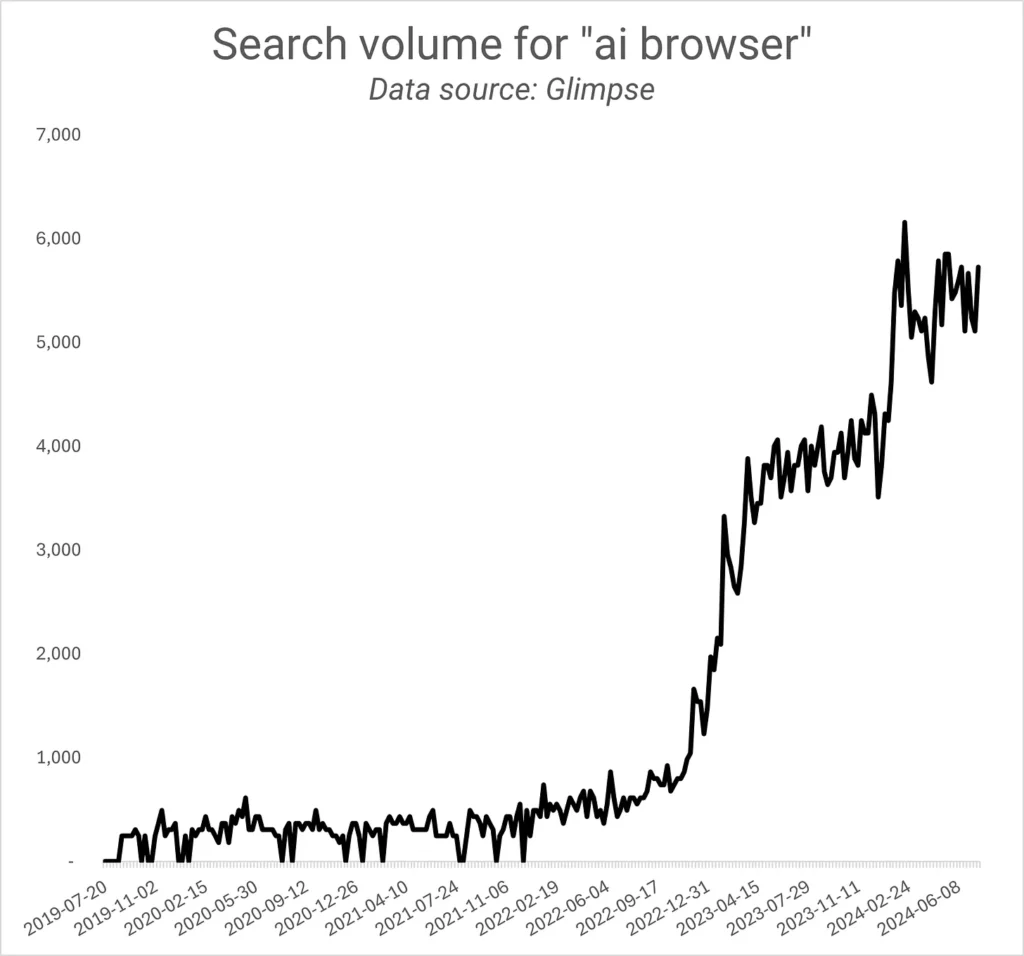
There are reports that Sam Altman is collaborating with Jon Ivy to build a phone. This move is unsurprising, given Apple’s significant influence over other ecosystems and platforms.
Recall when Apple’s privacy changes impacted Meta’s annual revenue by $10 billion? Apple could potentially develop its own AI models and integrate them at the OS level, posing a significant threat to OpenAI. Developing a browser could help mitigate some of that risk.
Bing’s recent update to its search interface provides a glimpse of what Search GPT might look like, with AI-generated answers prominently displayed at the top and traditional search results on the side, a nod to the classic blue links.
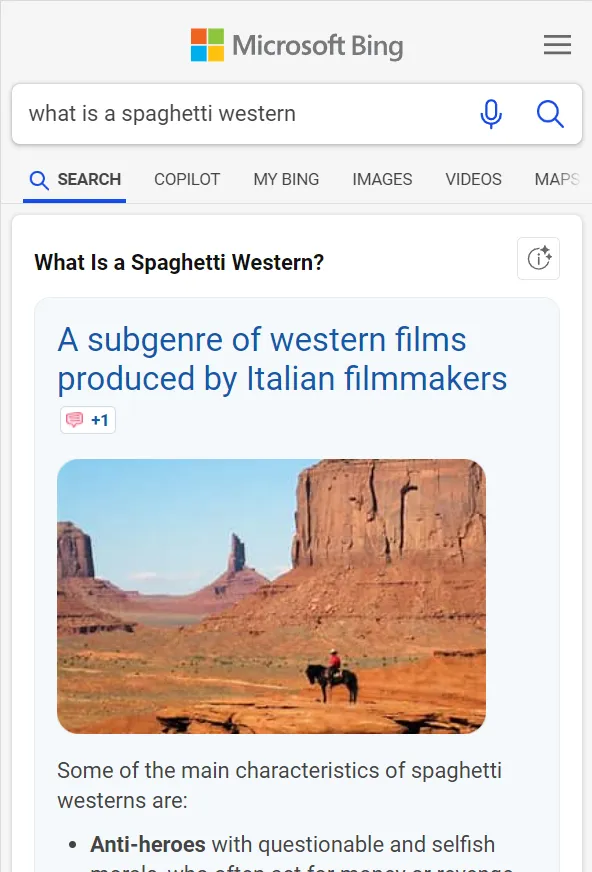
Original news from SearchEngineJournal